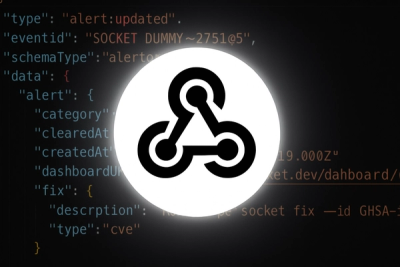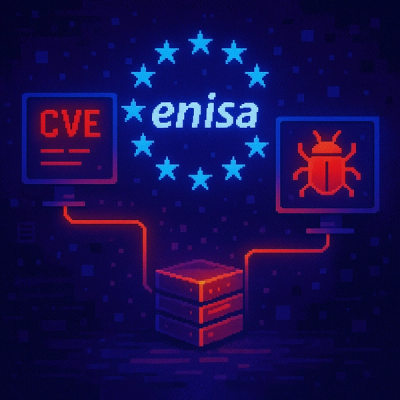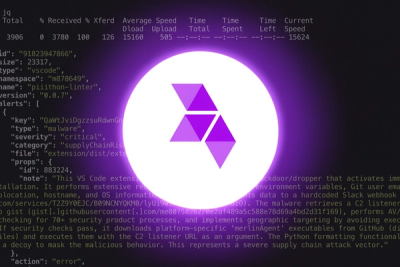
Product
Introducing Webhook Events for Alert Changes
Add real-time Socket webhook events to your workflows to automatically receive software supply chain alert changes in real time.
@mediamonks/image-effect-renderer
Advanced tools
The image-effect-renderer is a lightweight package that allows you to run WebGL fragment shaders in your website using WebGL. It can be used to apply effects to HTML images or video sources. Zero dependencies.
The image-effect-renderer is a lightweight package that allows you to run fragment shaders in your website using WebGL. It can be used to apply effects to HTML images or video sources. Zero dependencies.
The ImageEffectRenderer supports the most common variables used in Shadertoy and the syntax of fragments shaders from Shadertoy and OneShader. This makes it easy to prototype different effects using Shadertoy or OneShader.
This is a build from the repository's example/ directory.
Add @mediamonks/image-effect-renderer to your project:
npm i @mediamonks/image-effect-renderer
Simple shader rendering on canvas.
import {ImageEffectRenderer} from '@mediamonks/image-effect-renderer';
import shader from './shader.glsl';
const options = {loop: true};
// Creating an RendererInstance
const renderer = ImageEffectRenderer.createTemporary(wrapperElement, shader, options);
...
// Clean up the renderer when it's no longer needed
ImageEffectRenderer.releaseTemporary(renderer);
You can set the following options when creating a renderer:
false.true.window.devicePixelRatio.false.true.ImageEffectRenderers can share one WebGLContext (see useSharedContext). This is needed if multiple
ImageEffectRenderers are active at a time.
If you have only one ImageEffectRenderer on a page or if you create a large ImageEffectRenderer (
i.e. fullscreen), the ImageEffectRenderer will run faster if you create it having its own
WebGLContext:
The package includes optional React components and hooks. React is tree-shakeable and only included
when you import from @mediamonks/image-effect-renderer/react.
import { useRef } from 'react';
import { ImageEffectRendererComponent } from '@mediamonks/image-effect-renderer/react';
import glitchShader from './glitch.glsl?raw';
function App() {
const rendererRef = useRef(null);
const handlePlay = () => {
rendererRef.current?.renderer?.play();
};
return (
<>
<ImageEffectRendererComponent
ref={rendererRef}
shader={glitchShader}
loop={false}
images={[
{ slotIndex: 0, image: myImage, options: { flipY: true } }
]}
style={{ width: '100%', height: '100vh' }}
/>
<button onClick={handlePlay}>Play</button>
</>
);
}
For more control, you can use the useImageEffectRenderer hook:
import { useEffect } from 'react';
import { useImageEffectRenderer } from '@mediamonks/image-effect-renderer/react';
import shader from './shader.glsl?raw';
function App() {
const { ref, renderer, isReady } = useImageEffectRenderer({
shader,
loop: true,
images: [{ slotIndex: 0, image: myImage }]
});
useEffect(() => {
if (renderer && isReady) {
renderer.play();
}
}, [renderer, isReady]);
return <div ref={ref} style={{ width: '100%', height: '100vh' }} />;
}
The ImageEffectRendererComponent accepts all ImageEffectRendererOptions plus:
The useImageEffectRenderer hook returns:
This library allows adding images into up to eight slots, which can be utilized in the shader (as sampler2D iChannel0 to iChannel7). Ensure images are fully loaded before adding them.
slotIndex (number) - Index of the slot where the image will be set.image (HTMLImageElement | HTMLCanvasElement | HTMLVideoElement | RendererBuffer) - The image
data you want to use in the shader.options (Partial) - Custom configuration for image handling. This is optional.import {ImageEffectRenderer} from '@mediamonks/image-effect-renderer';
import shader from './shader.glsl';
const renderer = ImageEffectRenderer.createTemporary(wrapperElement, shader, {loop: false});
const imageOptions = {};
renderer.setImage(0, image, imageOptions);
renderer.play();
When setting an image, you can pass an object with the following options:
true.true.false.true.true.true.true.Commences or resumes the rendering loop.
renderer.play();
Pauses the rendering loop.
renderer.stop();
Creates or replaces a render buffer at a specified index.
i (number) - The index of the buffer to create/replace.shader (string) - The shader used for the buffer rendering.options (Partial) - Custom configuration for buffer creation. This is optional.Renderer - The newly created or replaced buffer object.let newBuffer = renderer.createBuffer(index, shader, options);
Registers a tick function to be called on every frame update.
tick (Function) - The function to be called. It accepts a single parameter dt representing
the delta time.renderer.tick(dt => {
// Operations to be performed every tick
});
Registers a ready function to be called when the renderer instance is ready.
ready (Function) - The function to be called.renderer.ready(() => {
// Operations to be performed when renderer is ready
});
Draws a frame manually.
time (number) - Time of the frame to draw. Defaults to 0 if not specified.renderer.drawFrame(time);
You can set uniforms for each RendererInstance (created by calling
ImageEffectRenderer.createTemporary or by creating a buffer using renderer.createBuffer).
Sets a float uniform in the shader program.
name (string) - Name of the uniform.value (number) - Float value.renderer.setUniformFloat('uniformName', 0.5);
Sets an integer uniform in the shader program.
name (string) - Name of the uniform.value (number) - Integer value.renderer.setUniformInt('uniformName', 4);
Sets a vec2 uniform in the shader program.
name (string) - Name of the uniform.x (number) - X value.y (number) - Y value.renderer.setUniformVec2('uniformName', 0.5, 1.5);
Sets a vec3 uniform in the shader program.
name (string) - Name of the uniform.x (number) - X value.y (number) - Y value.z (number) - Z value.renderer.setUniformVec3('uniformName', 0.5, 1.5, 2.5);
Sets a vec4 uniform in the shader program.
name (string) - Name of the uniform.x (number) - X value.y (number) - Y value.z (number) - Z value.w (number) - W value.renderer.setUniformVec4('uniformName', 0.5, 1.5, 2.5, 3.5);
Sets a matrix uniform in the shader program.
name (string) - Name of the uniform.matrix (Float32Array) - 4X4 matrix.let matrix = new Float32Array([1, 0, 0, 0, 0, 1, 0, 0, 0, 0, 1, 0, 0, 0, 0, 1]);
renderer.setUniformMatrix('uniformName', matrix);
It is possible to create multiple ping-pong buffers, each functioning with its shader, which functions analogously to adding extra buffer tabs in Shadertoy.
renderer.createBuffer(0, shader);
You can assign a buffer to an image slot:
renderer.buffers[0].setImage(0, this.renderer.buffers[0]); // ping-pong
// and
renderer.setImage(0, renderer.buffers[0]);
Sets buffers and images using a declarative configuration object. This is a convenience method that
calls setBuffersData and setImagesData in the correct order.
data (RendererData) - Configuration object containing buffers and/or images.renderer.setData({
buffers: [
{
index: 0,
shader: bufferShader,
options: { clampX: false, clampY: false },
images: [{ slotIndex: 0, image: { bufferIndex: 1 } }]
}
],
images: [
{ slotIndex: 0, image: myImage, options: { flipY: true } }
]
});
Creates multiple buffers from an array of buffer configurations. Buffers are created in two passes: first all buffers are initialized, then images are assigned to ensure buffer dependencies are available.
buffers (BufferData[]) - Array of buffer configurations.renderer.setBuffersData([
{
index: 0,
shader: shader0,
options: { clampX: false },
images: [{ slotIndex: 0, image: { bufferIndex: 1 } }]
},
{
index: 1,
shader: shader1,
options: { clampY: false }
}
]);
Sets multiple images to slots using an array configuration. Images can reference buffers using the
bufferIndex property.
images (ImagesData) - Array of image configurations.renderer.setImagesData([
{ slotIndex: 0, image: myImage, options: { flipY: true } },
{ slotIndex: 1, image: { bufferIndex: 0 } } // Reference buffer 0
]);
A buffer will render in the exact resolution as the output canvas. Please take a look at the examples directory for more examples.
To build image-effect-renderer, ensure that you have Git and Node.js installed.
Clone a copy of the repo:
git clone https://github.com/mediamonks/image-effect-renderer.git
Change to the image-effect-renderer directory:
cd image-effect-renderer
Install dev dependencies:
npm i
Build package:
npm run build
FAQs
The image-effect-renderer is a lightweight package that allows you to run WebGL fragment shaders in your website using WebGL. It can be used to apply effects to HTML images or video sources. Zero dependencies.
We found that @mediamonks/image-effect-renderer demonstrated a healthy version release cadence and project activity because the last version was released less than a year ago. It has 10 open source maintainers collaborating on the project.
Did you know?

Socket for GitHub automatically highlights issues in each pull request and monitors the health of all your open source dependencies. Discover the contents of your packages and block harmful activity before you install or update your dependencies.

Product
Add real-time Socket webhook events to your workflows to automatically receive software supply chain alert changes in real time.

Security News
ENISA has become a CVE Program Root, giving the EU a central authority for coordinating vulnerability reporting, disclosure, and cross-border response.

Product
Socket now scans OpenVSX extensions, giving teams early detection of risky behaviors, hidden capabilities, and supply chain threats in developer tools.